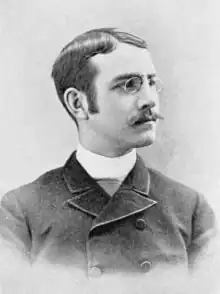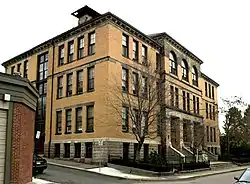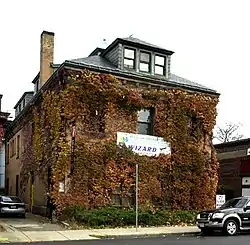Harrison Henry Atwood | |
|---|---|
 Atwood c. 1894 | |
| Member of the U.S. House of Representatives from Massachusetts's 10th district | |
| In office March 4, 1895 – March 3, 1897 | |
| Preceded by | Michael J. McEttrick |
| Succeeded by | Samuel J. Barrows |
| Member of the Massachusetts House of Representatives | |
| In office 1887–1889 | |
| Preceded by | Patrick D. Dwyer Matthew Dolan |
| Succeeded by | Joseph P. Lomasney |
| Constituency | 8th Suffolk district |
| In office 1915–1915 | |
| Preceded by | Timothy J. Ahern Sanford Bates Charles S. Lawler |
| Succeeded by | Charles S. Lawler |
| Constituency | 24th Suffolk district |
| In office 1917–1918 | |
| Succeeded by | Frank L. Brier Elihu D. Stone |
| Constituency | 19th Suffolk district |
| In office 1923–1924 | |
| Preceded by | Frank L. Brier Herbert W. Burr Charles Shulman |
| Succeeded by | Bernard P. Casey Bernard Ginsburg |
| Constituency | 19th Suffolk district |
| In office 1927–1928 | |
| Preceded by | Peter J. Fitzgerald Joseph J. Mulhern |
| Succeeded by | Frank J. McFarland |
| Constituency | 17th Suffolk district |
| Personal details | |
| Born | August 26, 1863 North Londonderry, Vermont, U.S. |
| Died | October 22, 1954 (aged 91) Boston, Massachusetts, U.S. |
| Political party | Republican Progressive |
| Spouse | Clara Stein |
| Children | Harrison Jr. August |
| Profession | Architect |
| [1] | |
Harrison Henry Atwood (August 26, 1863 – October 22, 1954) was an American architect and politician who represented Boston in the United States House of Representatives from 1895 to 1897 and for several nonconsecutive terms in the Massachusetts House of Representatives. He was a member of the Republican Party but was also supported by the Progressive Party during his later terms in the Massachusetts House.
Biography
Born at the home of his grandmother in North Londonderry, Vermont, Atwood attended public schools in Boston. He studied architecture and engaged in that profession in Boston. Atwood was elected as a Republican to the Fifty-fourth Congress (March 4, 1895 – March 3, 1897). Atwood defeated incumbent Democrat Michael J. McEttrick.[2] He was a member of the Republican State Committee.
Atwood was an unsuccessful candidate for renomination in 1896 to the Fifty-fifth Congress. He resumed his former profession in Boston. From 1888 to 1894 he was a member of and secretary to the Boston Republican City Committee. From 1889 to 1890 he was City Architect of Boston, designing the Bowditch School, the Congress Street Fire Station, and the Harvard Avenue Fire Station, all on the National Register of Historic Places. Atwood also designed several churches for the Roman Catholic Archdiocese of Boston. He was again a member of the Massachusetts House of Representatives in 1915, 1917, 1918, 1923, 1924, 1927, and 1928.
He was an unsuccessful candidate for election in 1918 to the Sixty-sixth Congress, and then resumed his work as an architect in Boston. In April 1938, he moved to Wellesley Hills, Massachusetts.
Death
Atwood died in Boston on October 22, 1954, and was interred in Forest Hills Cemetery in the Forest Hills neighborhood of Boston.
Buildings on the National Register of Historic Places designed by H.H. Atwood
See also
References
- ↑ Who's Who in State Politics. Boston: Practical Politics. 1915.
- ↑ "FIGHTING 10TH. District Captured by the Republicans. Atwood Leads in the Exciting Race. Elected to Congress Beyond Doubt. McEttrick Second and 1029 Behind. But He Led McNary by No Less Than 1655 Votes. Fitzgerald in 9th Defeats Jesse M. Gove. Both Cronan and Coakley Left Out in the Cold. FITZGERALED'S FIGHT. How He Defeated Jesse Gove in the 9th Congressional District. FULLER THE VICTOR. He Defeats Both Cronan and Coakley for the Senate.", Boston Daily Globe, Boston, MA, p. 1, November 7, 1894
Bibliography
- United States Congress. "Harrison H. Atwood (id: A000336)". Biographical Directory of the United States Congress.
- Official Congressional Directory By United States Congress
![]() This article incorporates public domain material from the Biographical Directory of the United States Congress
This article incorporates public domain material from the Biographical Directory of the United States Congress




